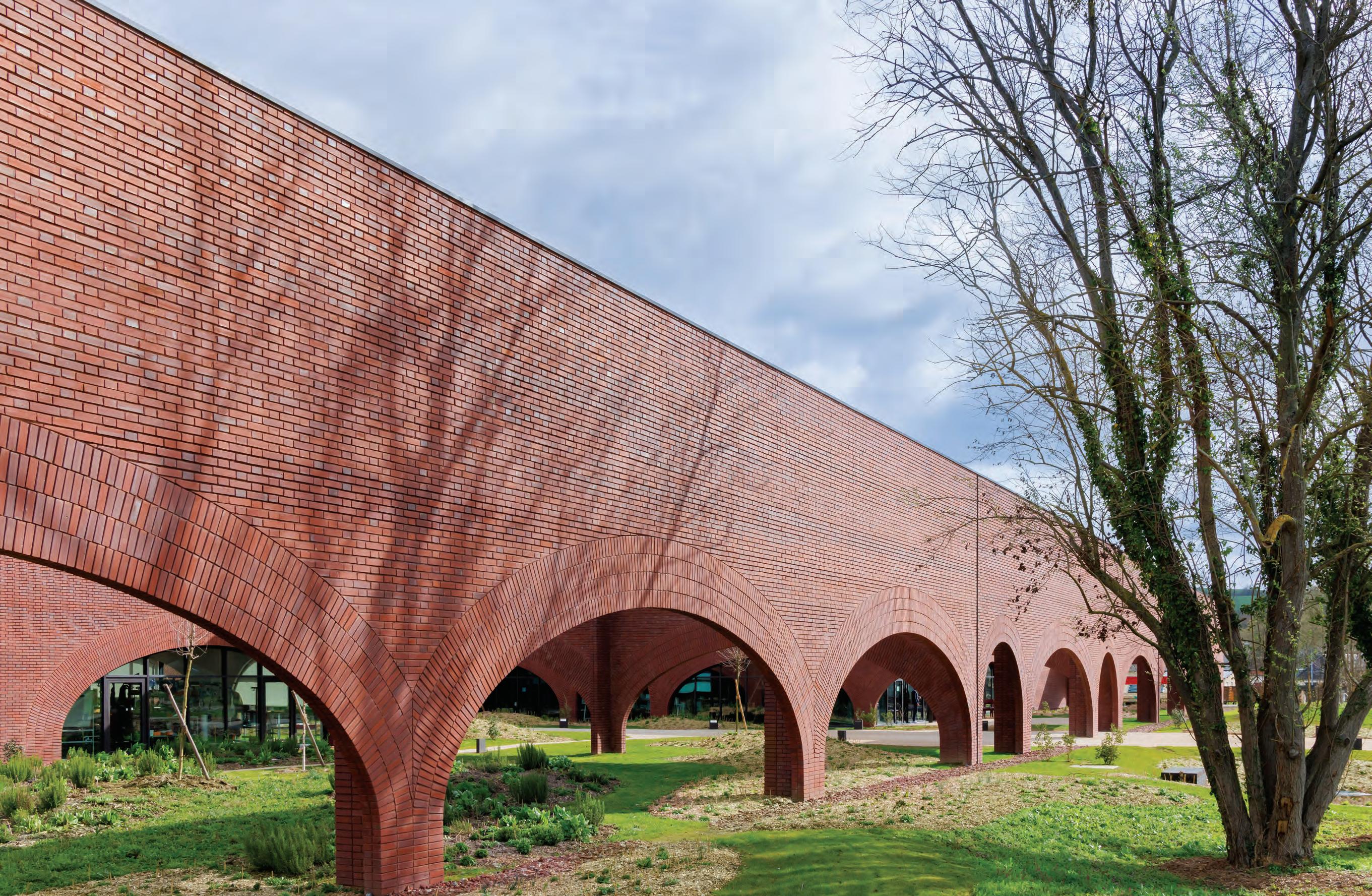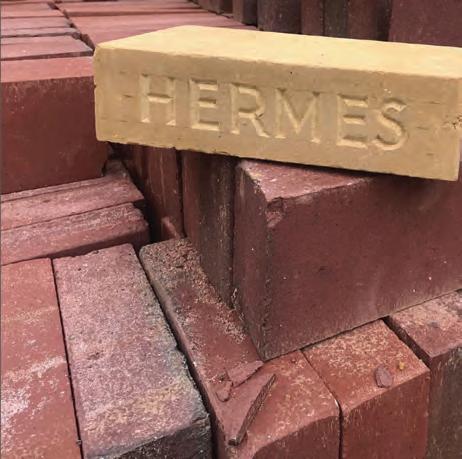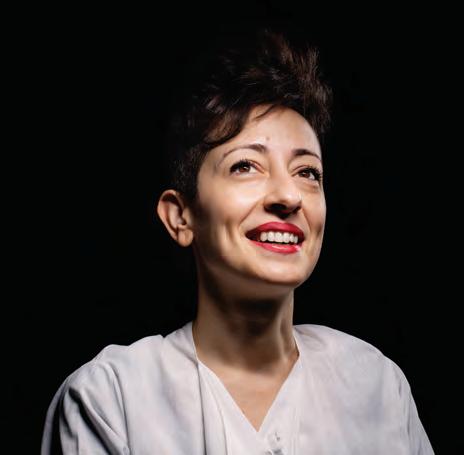
4 minute read
HERMÈS AND THE ART OF CREATION
f you go through Normandy, make a detour to Louviers. There stands Hermès’ new leather goods factory, inaugurated at the beginning of April. It’s the 21st factory the group operates, so why talk about it? Architecture lovers will understand. This building, all in brick arches, emerges from the surrounding nature like a mirage. Designed by the Lebanese architect Lina Ghotmeh, it expresses both the delicacy and the infinite poetry of the brand with the orange box.
Even before discovering the architectural secrets of this extraordinary building, we’re struck by music, both catchy and soothing. In the middle of verdant Norman nature, the movement of the arches recalls that of a galloping horse jumping as if on a merry-go-round.
Advertisement
More than 500,000 bricks, made by hand and sourced from a nearby brickyard, went into building this landmark. “Apart from the fact that the brick construction tells of a local material, made from the earth of the place, the natural span of a brick breakthrough is an arch. The design of the facade is then finely orchestrated by these galloping arches from side to side, reminiscent of the lightness of horse jumps in its proportions”, says Ghotmeh.

Inside, space is provided for 260 craftsmen from all leather disciplines. These craftsmen, coming from all walks of life, recruited simply on the base of their passion, receive training from the house’s master craftsmen. They can be philosophers, poets, teachers or doctors. The only thing that matters is their will to engage in the slow, silent life of leather production as they seek perfection.
The building is a large square divided into smaller squares. The standard measure used is that of the Hermès scarf: 90x90 cm. The workshops benefit from perfect sound insulation, so that even the noisiest work, such as hammering and cutting, only lets a little sound filter through from one room to another. Here, even saws and hammers whisper.
At the heart of the building, under an overhead natural light, unfolds a space called “the village square”. It offers itself as a meeting place that strengthens the links between the artisans. You can feel the real joy of the occupants, “I was very touched by the feedback from the craftsmen during the construction and design of the project. While discovering the project and living in it, they told me that they had the feeling of going on vacation... the feeling of discovering a cloister, a place appealing to the memory, a place where one feels good. designed this project for them, for their well-being,” confirms Ghotmeh. She herself had a small office on site, to watch the craftsmen take over the premises and do the fine-tuning. She, to her great satisfaction, only ever felt joy during the project.
All this started with the incredible thriving of the house of Hermès in recent years. In our time of crisis and global inflation, the French house has never wavered. Neither the pandemic nor the war in Ukraine have managed to make it lose its colours. Faced with the growing demand for bags and leather goods in all its markets, the house needed a new factory. The artistic director, Pierre-Alexis Dumas, insists on the character of “quality” rather than “luxury” when it comes to Hermès, “Here, we take the time to do things with love and thoroughness. Flashiness has never been part of the aesthetic vocabulary.”
The land identified, ten years ago, for this factory, was a former industrial wasteland. Normandy, land of horses and riding, came naturally. Since 1837, the DNA of Hermès has been linked to the craft of harnesses and saddles, at a time when people still travelled in carriages.
A competition was launched to identify the architecture most faithful to the project’s spirit. It had to reflect the spirit and soul of Hermès along with minimising the ecological impact of a factory which needs large amounts of electricity.

“I was invited by Hermès as well as three other agencies to compete for this manufacturing project. was very touched to learn that I had won this project with the unanimity of the jury of this competition”, Ghotmeh tells Yung. She immediately began work to develop her vision.

For a long time, the factory’s codename was “Precise Acts”. A name chosen by the architect to define both the building and its location. Ghotmeh wanted to create a building “capable of beauty”. And since beauty and efficiency often go hand in hand, this peaceful, luminous architecture, perfectly reflecting the spirit of its owner, has the particularity of displaying the exceptional E4C2 environmental label. This label is an indicator of excellence awarded to positive energy buildings, whose carbon impact is reduced to a minimum. “It is a technical, environmental and architectural feat, since it is also a place that is dedicated to production, and therefore needs a lot of energy and electricity to operate. I thought about the architecture of this project in a bioclimatic way, responding to natural resources, already thinking about an architecture designed intelligently in order to reduce the energy needs of the building,” says Lina Ghtomeh.
Instead of an industrial wasteland that had to be cleared of all the remains of a mid-century a little too proud of its economic acceleration, a little too ignorant of the dangers of certain materials such as asbestos, Hermès offers the visitor a building capable of beauty. Integrated into the landscape like one more forest, this factory is intriguing. It looks like a museum or a cultural centre from afar. Strangely, by its very shape, it evokes the approaches taken by the craftsmen as they work the leather: precision and constant search for excellence and beauty. It will remain, in the chaos of this world, a place of peace where a beautiful tribute is paid to the human hand, the most intelligent and sensitive tool that has ever existed. ■










